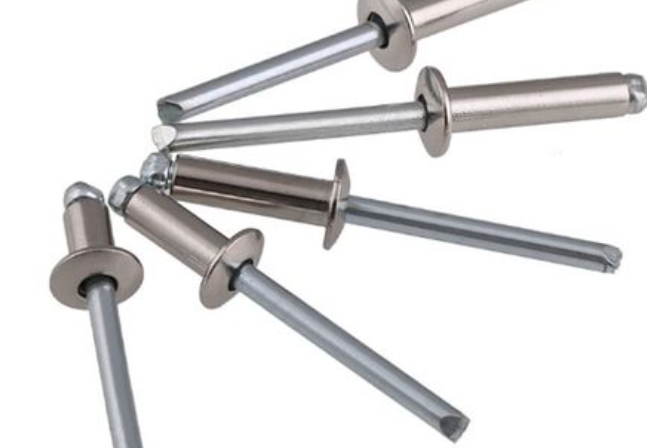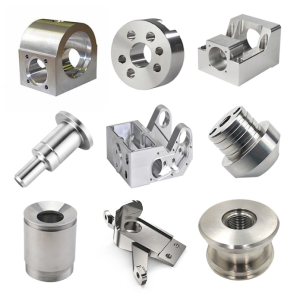Rivets are essential, cost-effective fasteners that are widely used in many industries, from aerospace to automotive. They are durable, easy to install, and versatile, making them a popular choice for joining parts in everything from bridges to aircraft. This guide will explore what rivets are, how they work, the types available, the materials used, and the advantages and disadvantages of using rivets.

What is a Rivet?
A rivet is a permanent mechanical fastener that holds two or more materials together. It consists of three parts:
- Head: The larger, flat end of the rivet.
- Shank: The cylindrical body of the rivet that fits into the drilled hole.
- Tail: The end of the rivet that expands or deforms to secure the materials together.
Rivets are installed by inserting them into a pre-drilled hole and then deforming the tail, typically with the help of a tool. This deformation locks the rivet in place, creating a permanent bond. Rivets are ideal for situations where only one side of the joint is accessible, making them especially useful in manufacturing, construction, and even aerospace.
Common Rivet Materials
Rivets come in various materials, each chosen for specific applications based on strength, corrosion resistance, and other factors. Below is a breakdown of the most common materials used:
| Material | Advantages | Common Uses |
|---|---|---|
| Aluminum | Lightweight, corrosion-resistant, easy to install, and cost-effective | Automotive, aerospace, and general construction |
| Stainless Steel | Strong, corrosion-resistant, suitable for high-stress applications | Aerospace, automotive, and heavy-duty machinery |
| Copper | Excellent electrical and thermal conductivity, easy to form | Electrical, thermal, and plumbing applications |
| Steel | Strong, durable, and cost-effective, often used in heavy-duty applications | Bridges, railways, and steel structures |
| Brass | Resistant to corrosion, spark-resistant, and aesthetically pleasing | Oil & gas industry, decorative applications |
Types of Rivets
There are many types of rivets, each designed for different applications. Let’s take a look at the most common types:
1. Blind Rivets (Pop Rivets)
Blind rivets are the most widely used type of rivet. They are perfect for situations where access to only one side of the joint is possible. Blind rivets are installed using a pneumatic or manual rivet tool that pulls the rivet, causing it to expand and securely fasten the materials together.
- Applications: Sheet metal construction, electronics, and furniture.
2. Solid Rivets
Solid rivets are the oldest and strongest type of rivet. These are typically used in heavy-duty applications like bridges, ships, and aircraft. The rivet is hammered into place, and the shank expands to form a second head, securely joining the materials.
- Applications: Aircraft frames, bridges, and heavy steel structures.
3. Tubular Rivets
Tubular rivets are similar to solid rivets but feature a hollow center. These rivets are easier to install than solid rivets and are used when less force is needed to secure the materials.
- Applications: HVAC ducts, light assemblies, and general sheet metal work.
4. Drive Rivets
Drive rivets have a short shank and a protruding head. They are installed by driving the head into the material with a hammer, which causes the rivet to expand and hold the materials together. They are quicker and easier to install than blind rivets, with no special tool required.
- Applications: Commercial sheet metal fabrication, automotive parts.
5. Split Rivets
Split rivets are used for lighter applications. The shaft is split into two legs that are hammered flat against the material, holding it securely. They are typically used for joining thinner materials like plastic, fabric, or lightweight metal.
- Applications: Leatherwork, light metal sheets, and textiles.
6. Self-Piercing Rivets
Self-piercing rivets are unique in that they don’t require pre-drilled holes. These rivets can pierce the material, forming a strong bond. They are commonly used in high-speed manufacturing processes.
- Applications: Automotive manufacturing, aerospace, and high-speed assembly lines.
Advantages of Using Rivets
Rivets offer several benefits that make them popular in many industries:
- Quick and Easy Installation: Most rivets are simple to install and require minimal training.
- Single-Side Access: Rivets can be installed from just one side, which is particularly useful for applications where the other side is hard to reach.
- Cost-Effective: Rivets are generally cheaper than other fastening methods like welding or bolts.
- Strong and Durable: Solid rivets, in particular, offer excellent strength and durability, resisting vibration and stress over time.
Disadvantages of Rivets
However, there are some downsides to using rivets:
- Permanence: Rivets are designed to be permanent fasteners, making them unsuitable for joints that need to be disassembled or repaired frequently.
- Limited Leak Protection: While some types of rivets (like self-piercing rivets) can create tight seals, most rivets do not provide a watertight connection, which may require additional sealing.
- Weakened Material: The hole drilled for the rivet weakens the material slightly, which can be a concern for high-stress applications.
Conclusion
Rivets are versatile, reliable, and cost-effective fasteners that play an important role in various industries. Whether you’re working in construction, automotive, or aerospace, understanding the types of rivets, the materials used, and their advantages and disadvantages can help you make the best decision for your project. Their strength, ease of installation, and low cost make them an excellent choice for many applications where a permanent, reliable fastener is needed.


